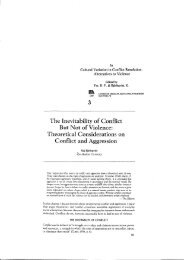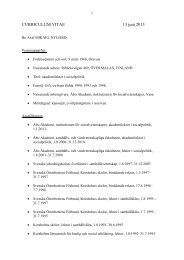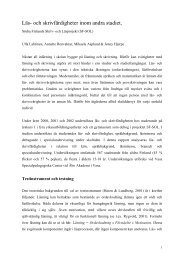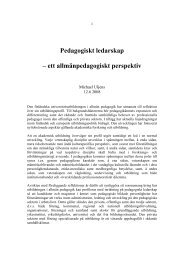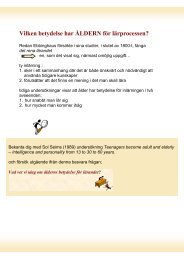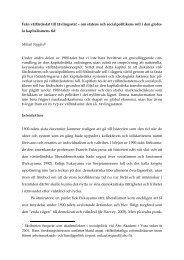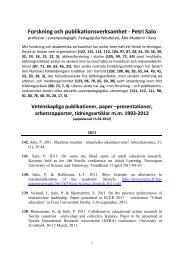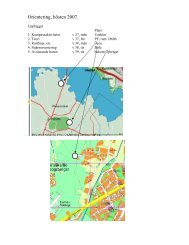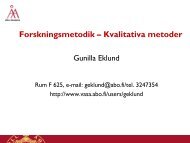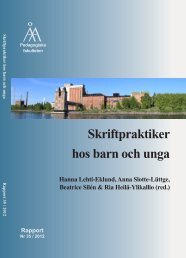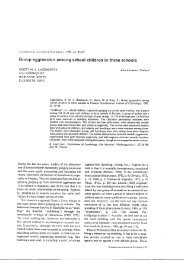Parties, Candidates and Citizens On-Line - Åbo Akademi
Parties, Candidates and Citizens On-Line - Åbo Akademi
Parties, Candidates and Citizens On-Line - Åbo Akademi
Create successful ePaper yourself
Turn your PDF publications into a flip-book with our unique Google optimized e-Paper software.
Table 2. Average degree of liveliness for the party-associated discussion boards at all<br />
coding periods<br />
Coding period<br />
Discussion board T1 a) T2 b) T3 c)<br />
N Liveliness N Liveliness N Liveliness<br />
X X X<br />
Centre Party 34 0.36 227 0.48 113 0.50<br />
CP member missing missing 18 0.22 19 0.32<br />
NCP 412 0.75 1132 0.72 600 0.74<br />
Green League d) 73 0.19 132 0.29 87 0.40<br />
Total & average 519 0.57 1509 0.43 819 0.49<br />
a) The differences between the discussion boards are significant F=143.771 (df=2) p=.000<br />
b) The differences between the discussion boards are significant F=106.285 (df=3) p=.000<br />
c) The differences between the discussion boards are significant F=47.238 (df=3) p=.000<br />
d) The differences over time are significant for the Green League board F=6.154 (df=3) p=.000<br />
For the other discussion boards, statistical significance was not achieved<br />
Overall, the liveliness of the discussion forums is relatively weak; at best the average total<br />
was only 0.57 (at T1) which in essence means that nearly half of all threads consist of only<br />
two messages. However, the forum of the NCP shows a somewhat better liveliness than<br />
the other party-associated forums. Through all coding periods, the green League’s (GL)<br />
discussion board has the lowest liveliness, even though there is a statistically significant<br />
increase over time. Likewise, the overall trend concerning all discussion boards, points at<br />
a slight increase in liveliness, even though statistical significance was not achieved.<br />
Nonetheless, it seems as though the debates on three out of four forums are very short.<br />
The context prior to the 2003 election (T2) did not significantly alter the liveliness, even<br />
though Table 1 revealed a high overall activity during that period.<br />
The intensity of debates can be measured in several ways. Hill <strong>and</strong> Hughes (1998:<br />
56), for instance, use the length of the thread as a measure of intensity. However, this<br />
operationalization seems questionable as this measure does not capture the depth of the<br />
debate. A long thread might nonetheless only consist of messages responding to the<br />
original message <strong>and</strong> thus the intensity is quite limited. Instead, an intensive thread should<br />
have messages responding to other replies <strong>and</strong> thus involve more citizens in the<br />
discussion. Thus, intensity should be measured with a tool which combines both the<br />
length of the thread <strong>and</strong> depth (number of levels of reply messages) of the thread.<br />
Therefore, the intensity of debates is measured using the following formula;<br />
Σm * Σl<br />
where Σm = the total number of individual messages in the thread<br />
Σl = the total number of reply-levels<br />
155



